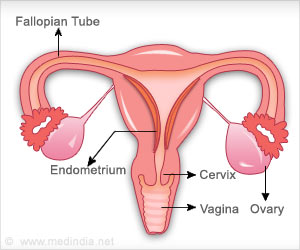Scientists at the University of Pennsylvania School of Medicine have announced the creation of transplantable living nerve tissue that encourages and guides regeneration in an animal model.
Scientists at the University of Pennsylvania School of Medicine have announced the creation of transplantable living nerve tissue that encourages and guides regeneration in an animal model.
Dr. Douglas H. Smith, a professor in the Department of Neurosurgery and Director of the Center for Brain Injury and Repair at Penn, says that he and his colleagues have successfully grown, transplanted, and integrated axon bundles that act as "jumper cables" to the host tissue in order to bridge a damaged section of nerve.This advance attains significance because there are insufficient means for repairing peripheral nerve injuries that, in many cases, result in permanent loss of motor function, sensory function, or both.
Previously, Smith and colleagues have "stretch-grown" axons (nerve fibres) by placing neurons from rat dorsal root ganglia, clusters of nerves just outside the spinal cord, on nutrient-filled plastic plates.
Axons sprouted from the neurons on each plate and connected with neurons on the other plate, which were then slowly pulled apart over a series of days, aided by a precise computer-controlled motor system.
The nerves were elongated to over 1 cm over seven days, after which they were embedded in a protein matrix (with growth factors), rolled into a tube, and then implanted to bridge a section of nerve that was removed in a rat.
"That creates what we call a 'nervous-tissue construct'. We have designed a cylinder that looks similar to the longitudinal arrangement of the nerve axon bundles before it was damaged. The long bundles of axons span two populations of neurons, and these neurons can have axons growing in two directions - toward each other and into the host tissue at each side," says Smith.
Advertisement
The authors observed that the host axons seemed to use the transplanted axons as a living scaffold to regenerate across the injury.
Advertisement
"Regenerating axons grew across the transplant bridge and became totally intertwined with the transplanted axons," says Smith.
The constructs survived and integrated without the use of immunosuppressive drugs, challenging the conventional wisdom regarding immune tolerance in the peripheral nervous system.
The researchers suspect that the living nerve-tissue construct encourages the survival of the supporting cells left in the nerve sheath away from the injury site, which further guide regeneration and provide the overall structure of the nerve.
"This may be a new way to promote nerve regeneration where it may not have been possible before," says co-first author Dr. D. Kacy Cullen, a post doctoral fellow in the Smith lab.
"It's a race against time - if nerve regeneration happens too slowly, as may be the case for major injuries, the support cells in the extremities can degenerate, blunting complete repair. Because our living axonal constructs actually grow into the host nerve sheath, they may 'babysit' these support cells to give the host more time to regenerate," Cullen added.
A research article on this work has been published in the journal Tissue Engineering.
Source-ANI
SRM








